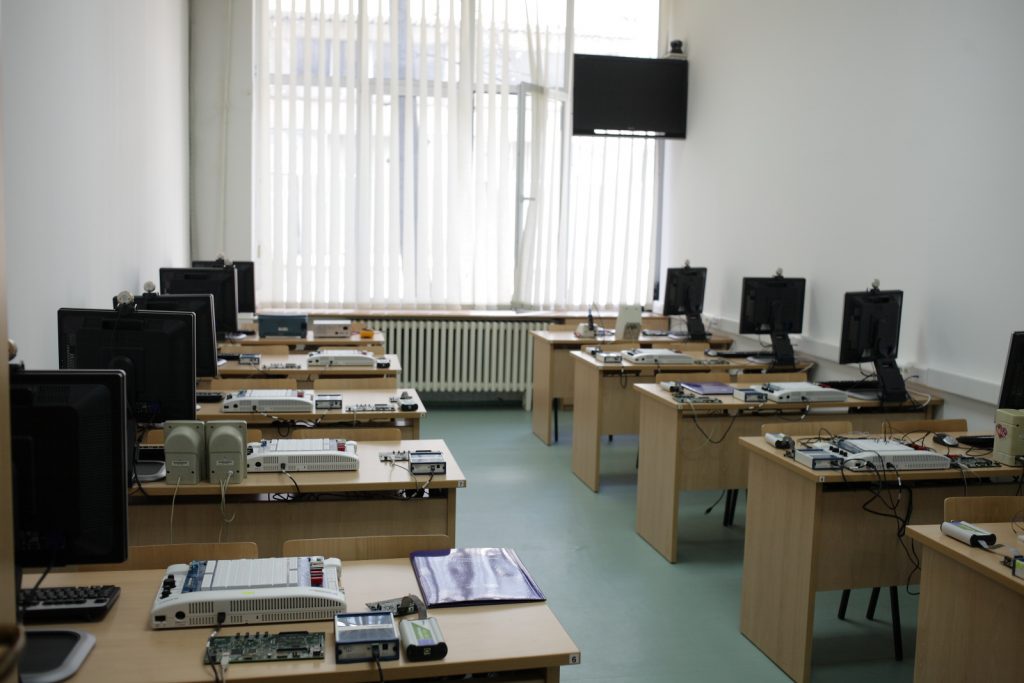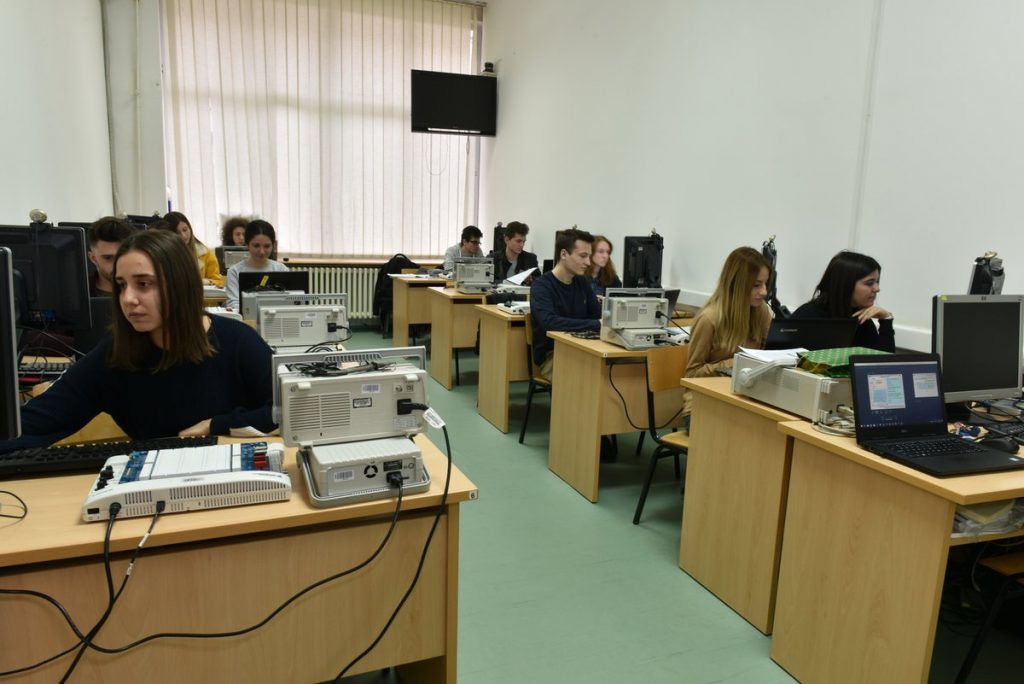The Signal Processing Laboratory was established in 2009 within the Institute of Electronics under the scope of the TEMPUS Project “Master studies in DSP based on blended learning approach”. In addition, the Laboratory is envisaged to host teaching activities in the field of signal processing, above all for laboratory exercises, as well as for term papers, undergraduate and graduate theses. It is also used for scientific, research and applied activities in national and international projects.
The main purpose of this Laboratory is to enable students to master basic concepts of signal processing by means of computer simulation and adequate hardware, familiarization with and the usage of DSP equipment that is optimized for real time signal processing, to emphasize the wide range of DSP applications with practical exercises in the fields of: image and video processing, audio processing and speech, computer vision, digital control, communications and the like. In other words, students are presented with the opportunity to implement practical algorithms for signal processing on contemporary DSP processor architectures in real time. Moreover, with the establishment of this Laboratory, we have created a space for providing support of the scientific, research and applied activities in this filed.
To this aim, the Laboratory has been equipped with a selection of hardware equipment including: 10 NI ELVIS II instruments platforms for the analysis and design of electrical circuits, 10 NI SPEEDY-33 development platforms for DSP applications, 10 Freescale MC56F8037EVM microcontrollers, 2 TMDSDSK6437 and 2 TMDSDSK6713 development platforms for multimedia applications, a Tek TDS2022B oscilloscope, as well as a TTI TG2000 functional generator and NI Labview software. The equipment is intended for the design, implementation and application of DSP processors and microcontrollers.

The Signal Processing Laboratory
The Laboratory is also equipped with contemporary, modern equipment which enables application of advances technologies in the course of the teaching process. There are 10x PCs and two video projectors at disposal, a TV set with video conferencing options, a document camera, a gigabit LAN network, and a wireless network.

Laboratory exercises in the Signal Processing Laboratory



